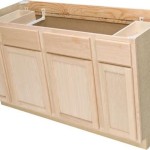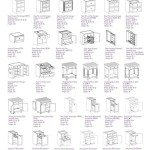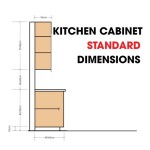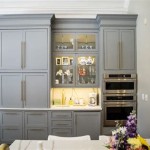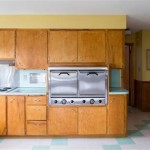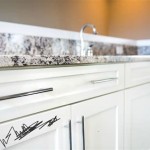Essential Aspects of Kitchen Cabinet Carcass Sizes
Kitchen cabinet carcasses are the essential framework that supports your cabinetry and ultimately determines the functionality and aesthetic appeal of your kitchen. Understanding the various carcass sizes available will help you plan and create a kitchen that perfectly meets your needs.
Carcass Height and Width
Cabinet carcass heights typically range from 30 to 36 inches, with 30 inches being the most common. However, taller cabinets, such as 36-inch or even 42-inch units, can provide additional storage space in larger kitchens. Cabinet widths range from 12 inches to 48 inches and can be customized to accommodate various storage requirements.
Carcass Depth
The depth of the cabinet carcass is crucial for both functionality and aesthetics. Standard carcass depths are 24 inches, which provides ample storage space and aligns with standard countertop overhangs. However, shallow carcasses, such as 18-inch or 21-inch units, can be used in tight spaces or to create a more contemporary look.
Framing Styles
Cabinet carcasses can feature different framing styles that influence the overall appearance and durability. Face frame carcasses have a decorative frame that surrounds the cabinet opening, while frameless carcasses offer a more modern, streamlined look with no visible frame.
Construction Materials
Cabinet carcasses can be constructed from various materials such as plywood, particleboard, or MDF. Plywood is a strong and durable material, while particleboard and MDF are more economical options that still provide adequate support.
Customizing Carcass Sizes
While standard carcass sizes are available, it's important to consider whether customization is necessary to achieve your desired kitchen design. Cabinet makers can modify carcass dimensions to accommodate specific space constraints or design preferences, such as creating taller or narrower units.
Professional Installation
Proper installation of kitchen cabinet carcasses is crucial for ensuring their stability and longevity. Hiring a professional cabinet installer is recommended to avoid improper alignment or damage to your cabinets.
Conclusion
Kitchen cabinet carcass sizes are a fundamental aspect of kitchen design that impact both functionality and aesthetics. By understanding the various heights, widths, depths, and framing styles available, as well as considering customization options and professional installation, you can create a kitchen that seamlessly aligns with your needs and enhances the overall beauty and functionality of your home.

Kitchen Cabinet Dimensions Base Cabinets Frameless

N Standard Kitchen Dimensions Renomart
Carcase Specification

Kitchen Base Cabinets 101 Ana White

N Standard Kitchen Dimensions Renomart

Kitchen Wall Cabinet Size Chart Builders Surplus Cabinets Sizes Dimensions

Kitchen Cabinets Design Materials Smith

Abcs Of Kitchen Cabinets And Specifications Granite Quartz Countertops Factory

Kitchen Unit Door Combinations

Making Kitchen Cabinets The Face Frame Bob Rozaieski Fine Woodworking
Related Posts

